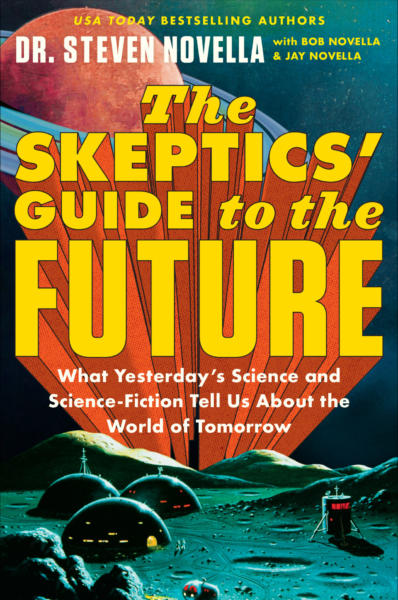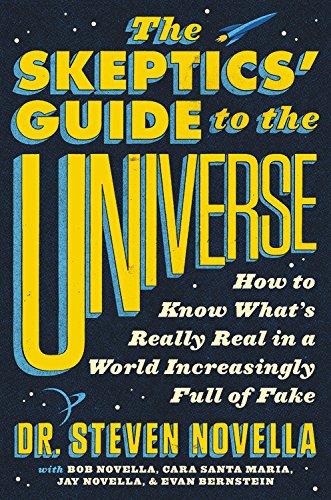May
13
2025
 What the true impact of artificial intelligence (AI) is and soon will be remains a point of contention. Even among scientifically literate skeptics people tend to fall into decidedly different narratives. Also, when being interviewed I can almost guarantee now that I will be asked what I think about the impact of AI – will it help, will it hurt, is it real, is it a sham? The reason I think there is so much disagreement is because all of these things are true at the same time. Different attitudes toward AI are partly due to confirmation bias. Once you have an AI narrative, you can easily find support for that narrative. But also I think part of the reason is that what you see depends on where you look.
What the true impact of artificial intelligence (AI) is and soon will be remains a point of contention. Even among scientifically literate skeptics people tend to fall into decidedly different narratives. Also, when being interviewed I can almost guarantee now that I will be asked what I think about the impact of AI – will it help, will it hurt, is it real, is it a sham? The reason I think there is so much disagreement is because all of these things are true at the same time. Different attitudes toward AI are partly due to confirmation bias. Once you have an AI narrative, you can easily find support for that narrative. But also I think part of the reason is that what you see depends on where you look.
The “AI is mostly hype” narrative derives partly from the fact that the current AI applications are not necessarily fundamentally different than AI applications in the last few decades. The big difference, of course, is the large language models, which are built on a transformer technology. This allows for training on massive sets of unstructured data (like the internet), and to simulate human speech in a very realistic manner. But they are still narrow AI, without any true understanding of concepts. This is why they “hallucinate” and lie – they are generating probable patterns, not actually thinking about the world.
So you can make the argument that recent AI is nothing fundamentally new, the output is highly flawed, still brittle in many ways, and mostly just flashy toys and ways to steal the creative output of people (who are generating the actual content). Or, you can look at the same data and conclude that AI has made incredible strides and we are just seeing its true potential. Applications like this one, that transforms old stills into brief movies, give us a glimpse of a “black mirror” near future where amazing digital creations will become our everyday experience.
Continue Reading »
May
12
2025
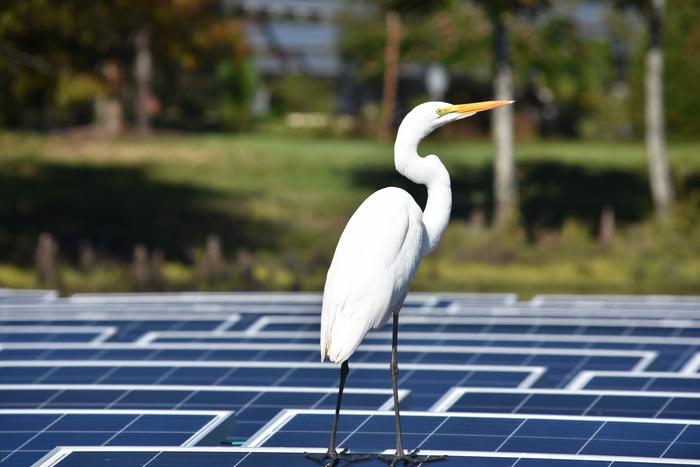 My last post was about floating nuclear power plants. By coincidence I then ran across a news item about floating solar installations. This is also a potentially useful idea, and is already being implemented and increasing. It is estimated that in 2022 total installed floating solar was at 13 gigawatts capacity (growing from only 3 GW in 2020). The growth rate is estimated to be 34% per year.
My last post was about floating nuclear power plants. By coincidence I then ran across a news item about floating solar installations. This is also a potentially useful idea, and is already being implemented and increasing. It is estimated that in 2022 total installed floating solar was at 13 gigawatts capacity (growing from only 3 GW in 2020). The growth rate is estimated to be 34% per year.
“Floatovoltaics”, as they are apparently called, are grid-scale solar installations on floating platforms. They are typically installed on artificial bodies of water, such as reservoirs and irrigations ponds. Such installations can have two main advantages. They can reduce evaporation which helps preserve the reservoirs. They also are a source of clean energy without having to use cropland or other land.
Land use can be a major limiting factor of solar power, depending on how it is installed. Here is an interesting comparison of the various energy sources and their land use. The greatest land use per energy produced is hydroelectric (33 m^2 / MWh). The best is nuclear, at 0.3 (that’s two orders of magnitude better). Rooftop solar is among the best at 1.2, while solar photovoltaic installed on land is among the worst at 19. This is exactly why I am a big advocate of rooftop solar, even though this is more expensive up front than grid-scale installations. Right now in the US rooftop solar produces about 1.5% of electricity, but the total potential capacity is about 45%. More realistically (excluding the least optimal locations), shooting for 20-30% of energy production from rooftop solar is a reasonable goal. If this is paired with home battery backup, this makes solar power even better.
Floating solar installations have the potential of having the best of both worlds – less land use than land-based solar, and better economics and rooftop solar. If the installation is serving double-duty as an evaporation-prevention strategy, this is even better. This also can potentially dovetail nicely with closed loop pumped hydro. This is a promising grid-level energy storage solution, in that it can store massive amounts of energy for long periods of time, enough to shift energy production to demand seasonally. The main source of energy loss with pumped hydro is evaporation, which can be mitigated by anti-evaporation strategies, which could include floating solar. Potentially you could have a large floating solar installation on top of a reservoir used for closed-loop pumped hydro, which stores the energy produced by the solar installation.
Continue Reading »
May
08
2025
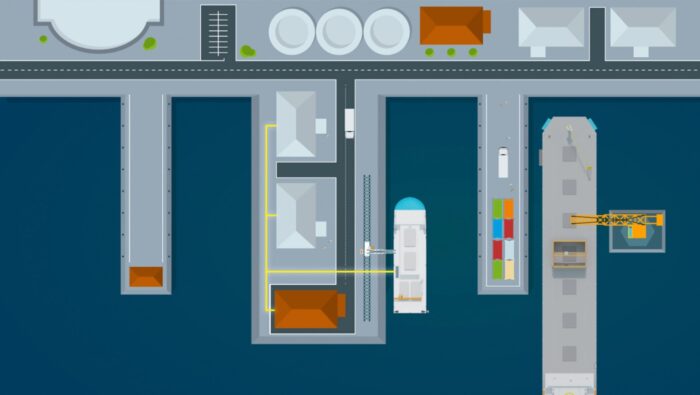 This is an intriguing idea, and one that I can see becoming critical over the next few decades, or never manifesting – developing a fleet of floating nuclear power plants. One company, Core Power, is working on this technology and plans to have commercially deployable plants by 2035. Company press releases touting their own technology and innovation is hardly an objective and reliable source, but that doesn’t mean the idea does not have merit. So let’s explore the pros and cons.
This is an intriguing idea, and one that I can see becoming critical over the next few decades, or never manifesting – developing a fleet of floating nuclear power plants. One company, Core Power, is working on this technology and plans to have commercially deployable plants by 2035. Company press releases touting their own technology and innovation is hardly an objective and reliable source, but that doesn’t mean the idea does not have merit. So let’s explore the pros and cons.
The first nuclear-powered ship, the USS Nautilus, was deployed in 1955. So in that sense we have had ship-based nuclear reactors operating continuously (collectively, not individually) for the last 70 years. Right now there are about 160 nuclear powered ships in operation, mostly submarines and aircraft carriers. They generally produce several hundred megawatts of electricity, compared to around 1600 for a typical large nuclear reactor. They are, however, in the range of small modular reactors which have been proposed as the next generation of land-based nuclear power. The US has operated nuclear powered ships without incident – a remarkable safety record. There have been a couple of incidents with Soviet ships, but arguably that was a Soviet problem, not an issue with the technology. In any case, that is a very long record of safe and effective operation.
Core Power wants to take this concept and adapt is for commercial energy production. They are designing nuclear power barges – large ships that are designed only to produce nuclear power, so all of their space can be dedicated to this purpose, and they can produce as much electricity as a standard nuclear power plant. They plan on using a Gen IV salt-cooled reactor design, which is inherently safer than older designs and does not require high pressure for operation and cooling.
Continue Reading »
Apr
24
2025
 Regulations are a classic example of a proverbial double-edged sword. They are essential to create and maintain a free and fair market, to prevent exploitation, and to promote safety and the public interest. Just look at 19th century America for countless examples of what happens without proper regulations (child labor, cities ablaze, patent medicines, and food was a crap shoot). But, regulations can have a powerful effect and this includes unintended consequences, regulatory overreach, ideological capture, and stifling bureaucracy. This is why optimal regulations should be minimalist, targeted, evidence-based, consensus-driven, and open to revision. This makes regulations also a classic example of Aristotle’s rule of the “golden mean”. Go too far to either extreme (too little or to onerous) and regulations can be a net negative.
Regulations are a classic example of a proverbial double-edged sword. They are essential to create and maintain a free and fair market, to prevent exploitation, and to promote safety and the public interest. Just look at 19th century America for countless examples of what happens without proper regulations (child labor, cities ablaze, patent medicines, and food was a crap shoot). But, regulations can have a powerful effect and this includes unintended consequences, regulatory overreach, ideological capture, and stifling bureaucracy. This is why optimal regulations should be minimalist, targeted, evidence-based, consensus-driven, and open to revision. This makes regulations also a classic example of Aristotle’s rule of the “golden mean”. Go too far to either extreme (too little or to onerous) and regulations can be a net negative.
The regulations of GMOs are an example, in my opinion, of ideological capture in regulations. The US, actually, has pretty good regulations, requiring study and approval for each new GMO product on the market, but no outright banning. You could argue that they are a bit too onerous to be optimal, ensuring that only large companies can afford to usher a new GMO product to the market, and therefore stifling competition from smaller companies. That’s one of those unintended consequences. Some states, like Hawaii and Vermont, have instituted their own more restrictive regulations, based purely on ideology and not science or evidence. Europe is another story, with highly restrictive regulations on GMOs.
But in recent years scientific advances in genetics have cracked the door open for genetic modification in highly regulated environments. This is similar to what happened with stem cell research in the US. Use of embryonic stem cells were ideologically controversial, and ultimately the development of any new cells lines was banned by Bush in 2001. Scientists then discovered how to convert adult cells into induced pluripotent stem cells, mostly side-stepping these regulations.
Continue Reading »
Apr
21
2025
 Have you ever been into a video game that you played for hours a day for a while? Did you ever experience elements of game play bleeding over into the real world? If you have, then you have experienced what psychologists call “game transfer phenomenon” or GTP. This can be subtle, such as unconsciously placing your hand on the AWSD keys on a keyboard, or more extreme such as imagining elements of the game in the real world, such as health bars over people’s heads.
Have you ever been into a video game that you played for hours a day for a while? Did you ever experience elements of game play bleeding over into the real world? If you have, then you have experienced what psychologists call “game transfer phenomenon” or GTP. This can be subtle, such as unconsciously placing your hand on the AWSD keys on a keyboard, or more extreme such as imagining elements of the game in the real world, such as health bars over people’s heads.
None of this is surprising, actually. Our brains adapt to use. Spend enough time in a certain environment, engaging in a specific activity, experiencing certain things, and these pathways will be reinforced. This is essentially what PTSD is – spend enough time fighting for your life in extremely violent and deadly situations, and the behaviors and associations you learn are hard to turn off. I have experienced only a tiny whisper of this after engaging for extended periods of time in live-action gaming that involves some sort of combat (like paint ball or LARPing) – it may take a few days for you to stop looking for threats and being jumpy.
I have also noticed a bit of transfer (and others have noted this to me as well) in that I find myself reaching to pause or rewind a live radio broadcast because I missed something that was said. I also frequently try to interact with screens that are not touch-screens. I am getting used to having the ability to affect my physical reality at will.
Now there is a new wrinkle to this phenomenon – we have to consider the impact of spending more and more time engaged in virtual experiences. This will only get more profound as virtual reality becomes more and more a part of our daily routine. I am also thinking about the not-to-distant future and beyond, where some people might spend huge chunks of their day in VR. Existing research shows that GTP is more likely to occur with increased time and immersiveness. What happens when our daily lives are a blend of the virtual and the physical? Not only is there VR, there is augmented reality (AR) where we overlay digital information onto our perception of the real world. This idea was explored in a Dr. Who episode in which a society of people were so dependent on AR that they were literally helpless without it, unable to even walk from point A to B.
Continue Reading »
Apr
14
2025
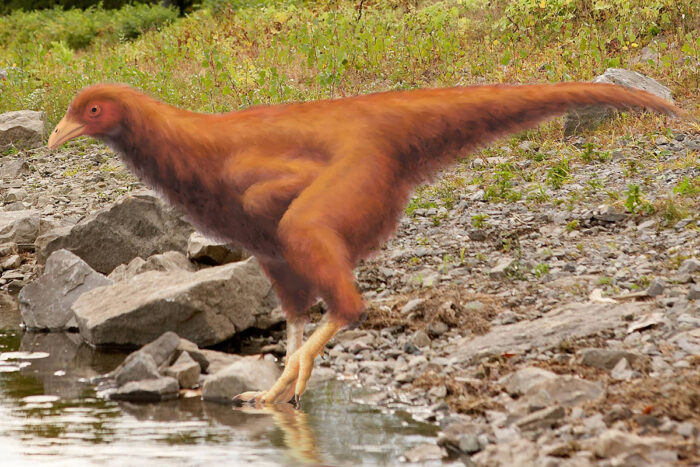 Last week I wrote about the de-extinction of the dire wolf by a company, Colossal Biosciences. What they did was pretty amazing – sequence ancient dire wolf DNA and use that as a template to make 20 changes to 14 genes in the gray wolf genome via CRISPR. They focused on the genetic changes they thought would have the biggest morphological effect, so that the resulting pups would look as much as possible like the dire wolves of old.
Last week I wrote about the de-extinction of the dire wolf by a company, Colossal Biosciences. What they did was pretty amazing – sequence ancient dire wolf DNA and use that as a template to make 20 changes to 14 genes in the gray wolf genome via CRISPR. They focused on the genetic changes they thought would have the biggest morphological effect, so that the resulting pups would look as much as possible like the dire wolves of old.
This achievement, however, is somewhat tainted by overhyping what was actually achieved, by the company and many media outlets. Although the pushback began immediately, and there is plenty of reporting about the fact that these are not exactly dire wolves (as I pointed out myself). I do think we should not fall into the pattern of focusing on the controversy and the negative and missing the fact that this is a genuinely amazing scientific accomplishment. It is easy to become blase about such things. Sometimes it’s hard to know in reporting what the optimal balance is between the positive and the negative, and as skeptics we definitely can tend toward the negative.
I feel the same way, for example, about artificial intelligence. Some of my skeptical colleagues have taken the approach that AI is mostly hype, and focusing on what the recent crop of AI apps are not (they are not sentient, they are not AGI), rather than what they are. In both cases I think it’s important to remember that science and pseudoscience are a continuum, and just because something is being overhyped does not mean it gets tossed in the pseudoscience bucket. That is just another form of bias. Sometimes that amounts to substituting cynicism for more nuanced skepticism.
Continue Reading »
Apr
11
2025
 We may have a unique opportunity to make an infrastructure investment that can demonstrably save money over the long term – by burying power and broadband lines. This is always an option, of course, but since we are in the early phases of rolling out fiber optic service, and also trying to improve our grid infrastructure with reconductoring, now may be the perfect time to also upgrade our infrastructure by burying much of these lines.
We may have a unique opportunity to make an infrastructure investment that can demonstrably save money over the long term – by burying power and broadband lines. This is always an option, of course, but since we are in the early phases of rolling out fiber optic service, and also trying to improve our grid infrastructure with reconductoring, now may be the perfect time to also upgrade our infrastructure by burying much of these lines.
This has long been a frustration of mine. I remember over 40 years ago seeing new housing developments (my father was in construction) with all the power lines buried. I hadn’t realized what a terrible eye sore all those telephone poles and wires were until they were gone. It was beautiful. I was lead to believe this was the new trend, especially for residential areas. I looked forward to a day without the ubiquitous telephone poles, much like the transition to cable eliminated the awful TV antennae on top of every home. But that day never came. Areas with buried lines remained, it seems, a privilege of upscale neighborhoods. I get further annoyed every time there is a power outage in my area because of a downed line.
The reason, ultimately, had to be cost. Sure, there are lots of variables that determine that cost, but at the end of the day developers, towns, utility companies were taking the cheaper option. But what price do we place on the aesthetics of the places we live, and the inconvenience of regular power outages? I also hate the fact that the utility companies have to come around every year or so and carve ugly paths through large beautiful trees.
Continue Reading »
Apr
08
2025
 This really is just a coincidence – I posted yesterday about using AI and modern genetic engineering technology, with one application being the de-extinction of species. I had not seen the news from yesterday about a company that just announced it has cloned three dire wolves from ancient DNA. This is all over the news, so here is a quick recap before we discuss the implications.
This really is just a coincidence – I posted yesterday about using AI and modern genetic engineering technology, with one application being the de-extinction of species. I had not seen the news from yesterday about a company that just announced it has cloned three dire wolves from ancient DNA. This is all over the news, so here is a quick recap before we discuss the implications.
The company, Colossal Biosciences, has long announced its plans to de-extinct the woolly mammoth. This was the company that recently announced it had made a woolly mouse by inserting a gene for wooliness from recovered woolly mammoth DNA. This was a proof-of-concept demonstration. But now they say they have also been working on the dire wolf, a species of wolf closely related to the modern gray wolf that went extinct 13,000 years ago. We mostly know about them from skeletons found in the Le Brea tar pits (some of which are on display at my local Peabody Museum). Dire wolves are about 20% bigger than gray wolves, have thicker lighter coats, and are more muscular. They are the bad-ass ice-age version of wolves that coexisted with saber-toothed tigers and woolly mammoths.
The company was able to recover DNA from 13,000 year old tooth and a 72,000 year old skull. With that DNA they engineered wolf DNA at 20 sites over 14 genes, then used that DNA to fertilize an egg which they gestated in a dog. They actually did this twice, the first time creating two males, Romulus and Remus (now six months old), and the second time making one female, Kaleesi (now three months old). The wolves are kept in a reserve. The company says they have no current plan to breed them, but do plan to make more in order to create a full pack to study pack behavior.
Continue Reading »
Apr
07
2025
I think it’s increasingly difficult to argue that the recent boom in artificial intelligence (AI) is mostly hype. There is a lot of hype, but don’t let that distract you from the real progress. The best indication of this is applications in scientific research, because the outcomes are measurable and objective. AI applications are particularly adept at finding patterns in vast sets of data, finding patterns in hours that might have required months of traditional research. We recently discussed on the SGU using AI to sequence proteins, which is the direction that researchers are going in. Compared to the traditional method using AI analysis is faster and better at identifying novel proteins (not already in the database).
One SGU listener asked an interesting question after our discussion of AI and protein sequencing that I wanted to explore – can we apply the same approach to DNA and can this result in reverse-engineering the genetic sequence from the desired traits? AI is already transforming genetic research. AI apps allow for faster, cheaper, and more accurate DNA sequencing, while also allowing for the identification of gene variants that correlate with a disease or a trait. Genetics is in the sweet spot for these AI applications – using large databases to find meaningful patterns. How far will this tech go, and how quickly.
We have already sequenced the DNA of over 3,000 species. This number is increasing quickly, accelerated by AI sequencing techniques. We also have a lot of data about gene sequences and the resulting proteins, non-coding regulatory DNA, gene variants and disease states, and developmental biology. If we trained an AI on all this data, could it then make predictions about the effects of novel gene variants? Could it also go from a desired morphological trait back to the genetic sequence that would produce that trait? Again, this sounds like the perfect application for AI.
Continue Reading »
Apr
04
2025
 Yes – it is well-documented that in many industries the design of products incorporates a plan for when the product will need to be replaced. A blatant example was in 1924 when an international meeting of lightbulb manufacturers decided to limit the lifespan of lightbulbs to 1,000 hours, so that consumers would have to constantly replace them. This artificial limitation did not end until CFLs and then LED lightbulbs largely replaced incandescent bulbs.
Yes – it is well-documented that in many industries the design of products incorporates a plan for when the product will need to be replaced. A blatant example was in 1924 when an international meeting of lightbulb manufacturers decided to limit the lifespan of lightbulbs to 1,000 hours, so that consumers would have to constantly replace them. This artificial limitation did not end until CFLs and then LED lightbulbs largely replaced incandescent bulbs.
But – it’s more complicated than you might think (it always is). Planned obsolescence is not always about gimping products so they break faster. It often is – products are made so they are difficult to repair or upgrade and arbitrary fashions change specifically to create demand for new versions. But often there is a rational decision to limit product quality. Some products, like kids’ clothes, have a short use timeline, so consumers prefer cheap to durable. There is also a very good (for the consumer) example of true obsolescence – sometimes the technology simply advances, offering better products. Durability is not the only nor the primary attribute determining the quality of a product, and it makes no sense to build in expensive durability for a product that consumers will want to replace. So there is a complex dynamic among various product features, with durability being only one feature.
We can also ask the question, for any product or class of products, is durability actually decreasing over time? Consumers are now on the alert for planned obsolescence, and this may produce the confirmation bias of seeing it everywhere, even when it’s not true. A recent study looking at big-ticket appliances shows how complex this question can be. This is a Norwegian study looking at the lifespan of large appliances over decades, starting in the 1950s.
First, they found that for most large appliances, there was no decrease in lifespan over this time period. So the phenomenon simply did not exist for the items that homeowning consumers care the most about, their expensive appliances. There were two exceptions, however – ovens and washing machines. Each has its own explanations.
Continue Reading »
 What the true impact of artificial intelligence (AI) is and soon will be remains a point of contention. Even among scientifically literate skeptics people tend to fall into decidedly different narratives. Also, when being interviewed I can almost guarantee now that I will be asked what I think about the impact of AI – will it help, will it hurt, is it real, is it a sham? The reason I think there is so much disagreement is because all of these things are true at the same time. Different attitudes toward AI are partly due to confirmation bias. Once you have an AI narrative, you can easily find support for that narrative. But also I think part of the reason is that what you see depends on where you look.
What the true impact of artificial intelligence (AI) is and soon will be remains a point of contention. Even among scientifically literate skeptics people tend to fall into decidedly different narratives. Also, when being interviewed I can almost guarantee now that I will be asked what I think about the impact of AI – will it help, will it hurt, is it real, is it a sham? The reason I think there is so much disagreement is because all of these things are true at the same time. Different attitudes toward AI are partly due to confirmation bias. Once you have an AI narrative, you can easily find support for that narrative. But also I think part of the reason is that what you see depends on where you look.
 My last post was about
My last post was about  This is an intriguing idea, and one that I can see becoming critical over the next few decades, or never manifesting – developing a fleet of floating nuclear power plants. One company,
This is an intriguing idea, and one that I can see becoming critical over the next few decades, or never manifesting – developing a fleet of floating nuclear power plants. One company,  Regulations are a classic example of a proverbial double-edged sword. They are essential to create and maintain a free and fair market, to prevent exploitation, and to promote safety and the public interest. Just look at 19th century America for countless examples of what happens without proper regulations (child labor, cities ablaze, patent medicines, and food was a crap shoot). But, regulations can have a powerful effect and this includes unintended consequences, regulatory overreach, ideological capture, and stifling bureaucracy. This is why optimal regulations should be minimalist, targeted, evidence-based, consensus-driven, and open to revision. This makes regulations also a classic example of Aristotle’s rule of the “golden mean”. Go too far to either extreme (too little or to onerous) and regulations can be a net negative.
Regulations are a classic example of a proverbial double-edged sword. They are essential to create and maintain a free and fair market, to prevent exploitation, and to promote safety and the public interest. Just look at 19th century America for countless examples of what happens without proper regulations (child labor, cities ablaze, patent medicines, and food was a crap shoot). But, regulations can have a powerful effect and this includes unintended consequences, regulatory overreach, ideological capture, and stifling bureaucracy. This is why optimal regulations should be minimalist, targeted, evidence-based, consensus-driven, and open to revision. This makes regulations also a classic example of Aristotle’s rule of the “golden mean”. Go too far to either extreme (too little or to onerous) and regulations can be a net negative. Have you ever been into a video game that you played for hours a day for a while? Did you ever experience elements of game play bleeding over into the real world? If you have, then you have experienced what psychologists call “
Have you ever been into a video game that you played for hours a day for a while? Did you ever experience elements of game play bleeding over into the real world? If you have, then you have experienced what psychologists call “ Last week
Last week We may have a unique opportunity to make an infrastructure investment that can demonstrably save money over the long term – by burying power and broadband lines. This is always an option, of course, but since we are in the early phases of rolling out fiber optic service, and also trying to improve our grid infrastructure
We may have a unique opportunity to make an infrastructure investment that can demonstrably save money over the long term – by burying power and broadband lines. This is always an option, of course, but since we are in the early phases of rolling out fiber optic service, and also trying to improve our grid infrastructure  This really is just a coincidence –
This really is just a coincidence –  Yes –
Yes – 



